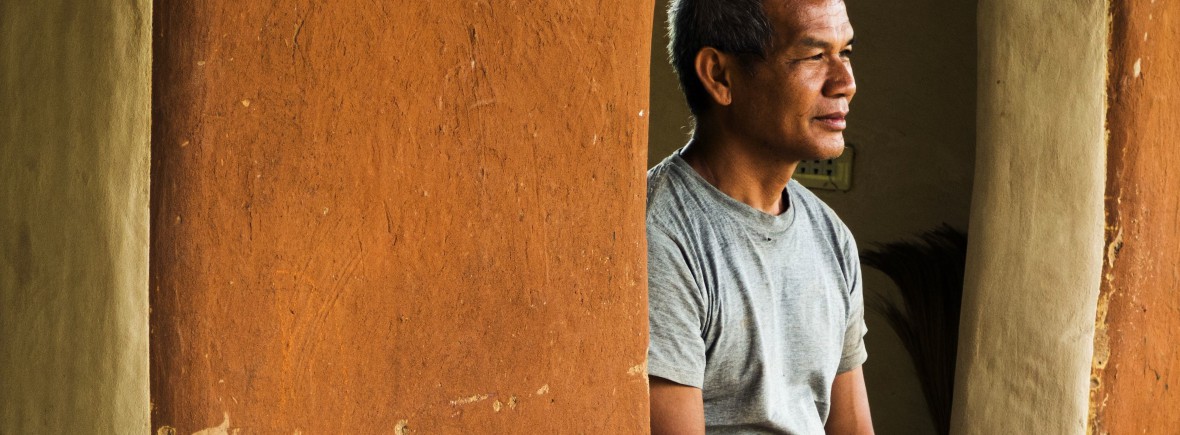When we came to this land we have a few visions in mind. Jo was raised a farmer and after living in Bangkok for a short time, went back to farming at his homeland in Northeastern Thailand. After that he was helping work with the earthen building movement in Thailand, and traveling a lot. What he really wanted to do was get to a place where he could grow things out and start saving seeds and work with local people to do the same.
Having worked with other farmers through groups and networks in Thailand on organic agriculture and supporting transitions to organic, we knew the only way to create a movement was to create a model in which farmers can see how it can be done. Talking alone with farmers when you’re not doing it yourself does nothing. You could talk and explain your theories and ideas for ages but this lends you little credibility unless you can show people what you have done yourself and found to work. Once a model is in place all a farmer needs to do is to see it once and they are able to understand it and use what they chose in conversion.
As well as being a model we wanted to also include an active learning center where we could host workshops, internships, and trainings on sustainable living for both Thais and international people.
That being said, it is a challenge to keep both going. There are times when we are more focused on the land and we are growing a large percentage of our food. There are other times when a large percentage of our gardens are going to seed. And there are times when the gardens get smaller because we’re hosting a lot of trainings and have few people to take care of it all. But we try to maintain a balance that works for the people living here while continuing to do outreach.
We’ve faced a few obstacles in our work. First off was the integrity of the soil on the land. The land used to be forest and several years ago it was cut down and mono-cropped with corn. This degraded and eroded the soil so much that in a few years time the soil became infertile and it was deserted. The old owner then plowed and burned it consecutively to just keep it clear with the hopes of selling it to some unknowing outsider. That’s where we came in! Just kidding but truly it was much worse than we actually thought it was when we got it! When we came we had degraded soil under weeds up to your knees or waist. We weren’t able to walk through the whole of the land because of prickery weeds. There were no trees besides the small mango starters on the far side of the hill. Everything had to be done by hand and with little resources as we had no money to invest and few people for work. We also had to still pass on much of our past work to new trainers and had to leave the farm often to transfer that work.
At first things were very hard to grow. It seemed a death wish to put anything in the soil. But we gradually built up the soil and moved our way up the hill developing as much as we could at a time. We planted banana trees in lines going down the hill (on vague contour) in order to build up organic matter, water in the soil and prevent more erosion. We planted fruit and other herbal edibles in between the banana trees. We developed the garden beds with manure, compost and mulch. We also had to build all the structures we needed to support community living needs and a place to host programs. This was all done by hand using all available resources possible. We stayed in a little hut on the neighbor’s land and worked morning to night and delighted in the changes happening everyday.
Another aspect we were dedicated to work on was to change people’s view of money. Although money can be a tool, we feel it should not be our inspiration or dependency. As the saying goes, ‘when all the forests and food is gone we will not be able to eat our bills’. We feel that true security comes from the ability to grow your own food, build your own home, and provide for your own needs. These are the skills our modern world has alienated us from and the wisdom that is being lost. We began the project with no money. Some friends donated a bit and we borrowed a bit to buy the land and we began working on the project with no funding. We wanted to live and work on the land in order to develop it. This is not to say we don’t use money, it’s just not our driving force.
Another of our premises is that what we demonstrate should be able to be done by anyone. For this purpose having degraded soil and no funds was perfect. If we could transform the land with what we had, anyone could do the same. Because of this belief, we focus on simple living and simple low-technology alternatives that individuals are able to manage and understand easily.
